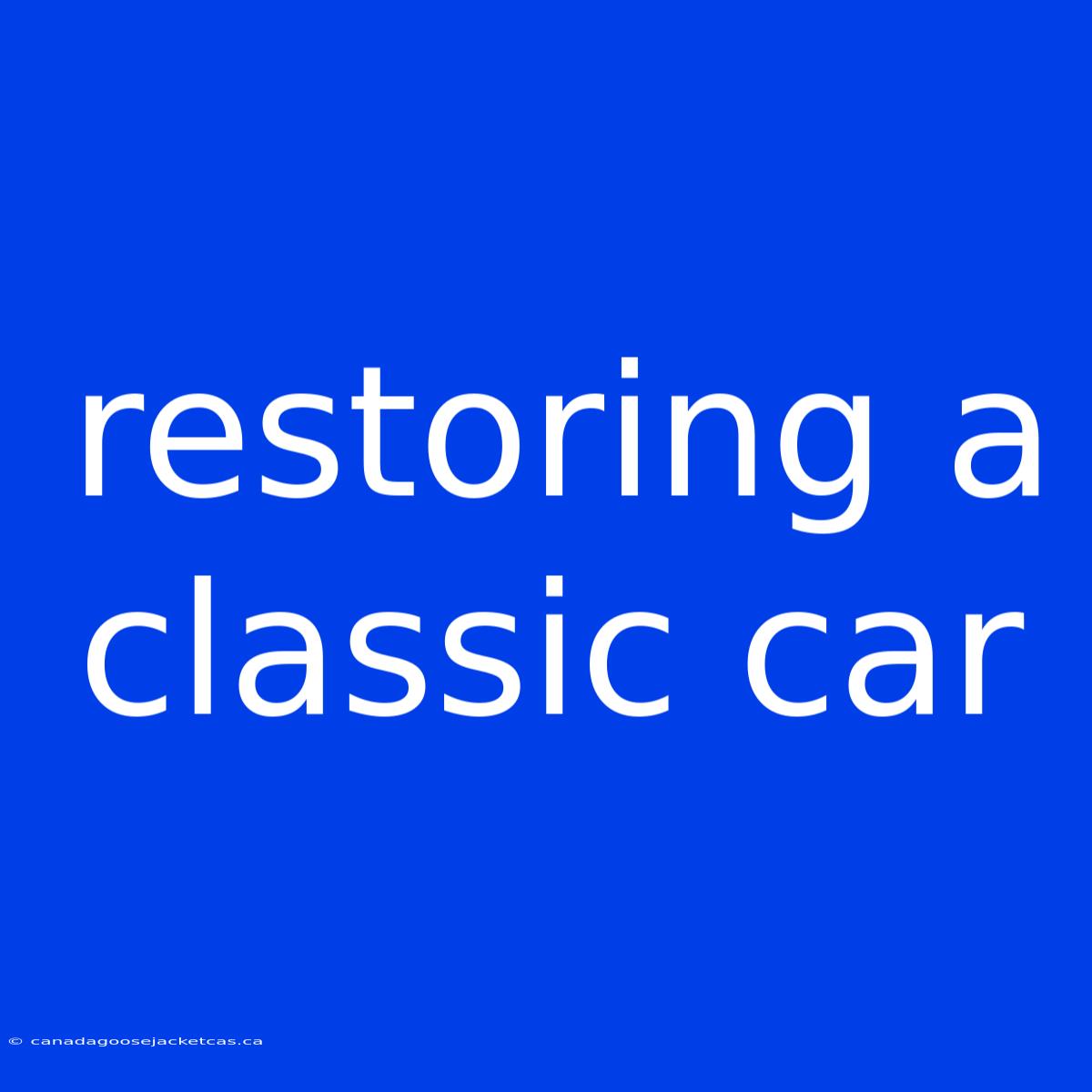Restoring a Classic Car: Unveiling the Beauty Beneath the Rust
Is restoring a classic car worth the time, effort, and money? Absolutely. Classic cars are more than just vehicles; they are time capsules, embodiments of automotive history, and testaments to craftsmanship. Bringing a classic back to its former glory is a rewarding journey, full of challenges and triumphs.
Editor Note: This article delves into the intricacies of restoring a classic car, providing a comprehensive guide for enthusiasts.
This topic is essential for anyone passionate about classic cars, whether you're a seasoned collector or a first-time restorer. This guide explores the process from initial assessment to final polish, touching upon key elements like choosing the right project, sourcing parts, tackling mechanical restoration, and achieving that show-stopping finish.
Analysis: This guide is the result of meticulous research, combing through expert advice and countless restoration projects. We've analyzed the common challenges, pitfalls, and best practices to offer you a clear roadmap for your classic car restoration journey.
Key Insights into Restoring a Classic Car:
| Key Aspect | Description |
|---|---|
| Project Selection | Careful consideration of model, condition, budget, and time commitment. |
| Parts Sourcing | Navigating a complex network of suppliers for original and aftermarket parts. |
| Mechanical Restoration | Rebuilding, repairing, or replacing components to ensure optimal performance and reliability. |
| Bodywork and Paint | Addressing rust, dents, and imperfections while achieving a flawless, factory-spec finish. |
| Interior Restoration | Reupholstering, replacing worn components, and restoring the car's original interior ambience. |
| Finishing Touches | Paying attention to detail, ensuring proper alignment, and adding those final touches for a truly remarkable restoration. |
Classic Car Restoration: Unlocking the Past
Project Selection: The journey begins with choosing the right project. Carefully consider the model's desirability, its condition (originality, rust, damage), your budget, and the time you're willing to invest. A well-researched decision lays the foundation for a successful restoration.
Parts Sourcing: Finding the right parts is crucial. Original parts are ideal but often scarce and expensive. Reputable aftermarket suppliers offer quality alternatives. Online forums and clubs can provide valuable leads.
Mechanical Restoration: This phase demands expertise and patience. From engine rebuilds to transmission overhauls, the goal is to ensure the car runs smoothly and reliably. Consult with experienced mechanics or specialized shops.
Bodywork and Paint: A crucial stage involving rust repair, dent removal, and achieving a flawless finish. This often requires professional expertise. Consider the car's original paint code and color to maintain authenticity.
Interior Restoration: Reupholstery, carpet replacement, and dash restoration breathe new life into the car's interior. Seek specialized shops with experience in classic car interiors.
Finishing Touches: The final stage involves ensuring all components are properly aligned, meticulously cleaning the engine bay, and adding those final touches like chrome detailing and a polished paint job.
Restoring a classic car is a journey of discovery, demanding dedication and a keen eye for detail. The result, a testament to your passion and craftsmanship, is a time capsule that will captivate and inspire for generations to come.

